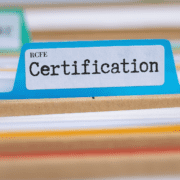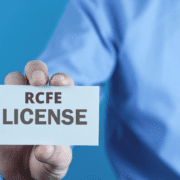Become a Senior Care Expert: Your Path to RCFE Certification in California
There is no secret that a career in the senior care industry can be very rewarding — both personally and professionally. The senior care field offers plenty of benefits, such as job stability and the potential for growth, but getting an RCFE certification is often a crucial step towards gaining employment or owning a facility.
Aspiring caregivers must have an understanding of the legal requirements associated with this certification process if they want to become RCFE-certified professionals.
This article is an overview of the preliminary measures to consider before becoming RCFE certified in preparation to work for an RCFE or to start your own RCFE.
Clarify Your Goals and Purpose for RCFE Certification
Before you move ahead with your plans, it’s important to know what you want to achieve by owning or managing an RCFE. Additionally, it’s helpful to do some self-reflection to understand why you want to pursue this path. Administrators and RCFE owners often list personal experiences or deep convictions as motivation to run an assisted living facility. Other reasons include:
- A positive experience caring for a family member or friend
- Satisfying employment as a caretaker or other position at an RCFE
- A desire to help others and make a difference
- Confidence in running a successful business
If you’re not quite sure of the role you want to pursue in running an RCFE, mind mapping can help get your thoughts and ideas down on paper. Once you pinpoint a definite goal, such as working as an RCFE administrator, you can move on to the steps you must take to reach your objective.
Research Information and Explore the Field
If you’re feeling some apprehension about taking the next step, the act of gathering all the facts and knowing exactly what you need to do can ease your fears. Learning everything involved in your new endeavor can also provide a reality check to make sure it is a good fit.
For example, perhaps you’re thinking about becoming an RCFE owner. You might prepare by reading about five questions to ask before turning your home into an RCFE.
Look At Helpful Websites
Trustworthy internet resources provide basic information such as certification requirements, course availability, and testing and licensing fees.
Since the California Department of Social Services oversees RCFE certification in California, the CDSS website is a good place to start your research for both facility licensing and administrator certification. Take time to examine the various pages and follow the links to get a clear picture of the three necessary steps to get your RCFE license California:
- Complete a mandatory orientation
- Fill out the appropriate application
- Pay the licensing fee
You must register for the required online orientation, which costs $50 for registration and $4.85 for processing. You receive important information about the licensing process during the orientation, but note that once you register, you only have 30 days to finish the online course and print your completion certificate. You can also view the actual application forms, as well as a chart of the RCFE license California fees, which vary according to the size of the facility.
Additionally, the Assisted Living Education blog is an excellent resource for practical tips and timely information about required RCFE classes, RCFE ownership and more. Get informative blog posts by signing up for our newsletter.
Investigate Mandatory Course Providers
As part of the procedure in California to become an administrator, you must finish an Initial Certification Training Program offered by an approved vendor, as well as achieve a score of at least 70% on the certification exam given by the CDSS. After meeting these qualifications, you also need to complete an Application for Administrator Certification that includes a $120 processing fee.
As you research the websites of various ICTP providers, you may want to compare some important points:
- Instructor qualifications and experience
- Class size
- Exam preparations
- Course locations and times
- Price
Remember that this training program prepares you not only to pass the certification exam but also to successfully carry out your duties once you begin your career as an RCFE administrator or owner. Assisted Living Education is a certified vendor. Certification must be through a certified vendor.
Visit Different RCFE Facilities
California licenses more than 7,400 RCFEs in the state, and they vary greatly in size, location, number of residents and employees, and types of amenities. Make appointments to visit several assisted living homes in your area to see how they differ in their indoor and outdoor environments, activities, food service, and daily schedules. You can learn a lot about the type of facility you would enjoy owning or managing.
Talk to Others in the Field
Job shadowing a working administrator or RCFE owner provides an inside look at your goal of RCFE certification. If job shadowing for a day isn’t possible, an in-depth interview that covers a typical work shift can also prove helpful. Come prepared with a list of questions in order of importance in case the time is short:
- Why did you decide to become an RCFE administrator?
- What made you want to start your own assisted living facility?
- What was the most challenging part of your certification course?
- What is the most difficult aspect of your job?
- What is your favorite part of the workday?
Listen carefully to the answers, asking follow-up questions if something isn’t clear. Always send a brief note of thanks after someone has given you time and shared knowledge.
Get Work Experience If Needed
One of your main reasons for pursuing administrator certification or opening your RCFE may hinge on previous employment at an assisted living facility.
If you have never worked at an RCFE or similar type of operation, logging some experience provides many benefits:
- You’ll find out if this is a good fit for your skills and temperament.
- You’ll learn exactly what is involved in the daily operations of an RCFE.
- You’ll gain experience to help you in your certification course and exam.
- You’ll acquire insight into the aging process and the needs of the elderly.
- You’ll make friends and contacts in the field.
Take the First Step Toward RCFE Certification
As you identify and work toward your new goals, selecting the right training and people to help you in your quest makes a big difference. Assisted Living Education is a CDSS-approved vendor for the RCFE administrator certification training course. Our experienced instructors present the curriculum you need in an interesting class filled with real-life anecdotes about running an assisted living facility.
You may also want to obtain professional help in completing your application for an RCFE license in California. This is a long, complicated process, and our RCFE license application service can help you get it right. Also, see our popular blog about 10 Steps to Open an RCFE in California for a thorough overview of important steps.
Assisted Living Education provides a wide range of state-approved learning opportunities and assistance to those seeking RCFE staff training for employees or guidance on starting an assisted living facility. Contact us today to learn how Assisted Living Education can help you meet all your RCFE certification objectives.
















































